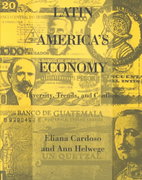Question
Q1: The market for kumquats is represented by Q = 2,400P - 1,000 and Q = 20,000 - 1,600P where Q is kilograms of kumquats
Q1: The market for kumquats is represented by Q = 2,400P - 1,000 and Q = 20,000 - 1,600P where Q is kilograms of kumquats and P is the price of kumquats per kilogram.
a) What are the equilibrium price and equilibrium quantity in this market? Show your calculations.
b) How much total revenue do kumquat farmers earn at the market equilibrium? Show your calculations.
c) Suppose the government imposes a quota of 8,000 kilograms in the market for kumquats. Is this quota binding on the market? Explain.
d) What is the new equilibrium price of kumquats as a result of the quota of 8,000 kilograms? Show your calculations.
e) What is the new total revenue as a result of the quota of 8,000 kilograms? Show your calculations.
f) Is demand elastic or inelastic when the price is between the original equilibrium price and the new equilibrium price? Explain or show your calculations.
g) Are kumquat farmers in favour of the government's quota of 8,000 kilograms? Explain. Hint: Kumquat farmers care about profit, which equals total revenue - total cost.
h) Instead of a quota of 8,000 kilograms, suppose the government imposes a quota of 9,200 kilograms in the market for kumquats. Is this quota binding on the market? Explain.
i) What is the new equilibrium price of kumquats as a result of the quota of 9,200 kilograms? Show your calculations.
j) What is the new total revenue as a result of the quota of 9,200 kilograms? Show your calculations.
k) Is demand elastic or inelastic when the price is between the original equilibrium price and the new equilibrium price in i)? Explain or show your calculations.
l) Are kumquat farmers in favour of the government's quota of 9,200 kilograms? Explain. Hint: Kumquat farmers care about profit, which equals total revenue - total cost.
Q2: The market for unskilled labour is represented by Q = 1,200 - 40w and Q = 160w - 800 where Q is the number of workers per hour and w is the hourly wage rate.
a) What are the equilibrium wage rate and equilibrium quantity in this market? Show your calculations.
b) How much total employment income do workers earn at the market equilibrium? Show your calculations.
c) Suppose the government decides to impose a minimum wage of $14/hour in this market. Is this minimum wage binding on the market and if yes, what is the new total employment income of workers? Show your calculations.
d) Do workers as a group support the government's minimum wage of $14/hour? Explain.
e) Suppose after imposing a minimum wage of $14/hour, the government decides to increase it to $18/hour. What is the new total employment income of workers? Show your calculations.
f) Is demand in this market elastic or inelastic when the wage rate is between $14/hour and $18/hour? Explain.
g) Do workers as a group support the government's increase in the minimum wage from $14/hour to $18/hour? Explain.
Step by Step Solution
There are 3 Steps involved in it
Step: 1

Get Instant Access to Expert-Tailored Solutions
See step-by-step solutions with expert insights and AI powered tools for academic success
Step: 2

Step: 3

Ace Your Homework with AI
Get the answers you need in no time with our AI-driven, step-by-step assistance
Get Started


